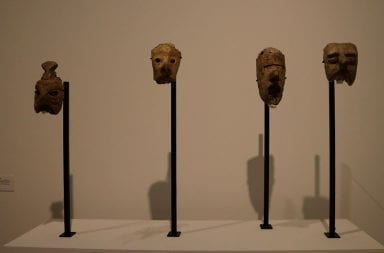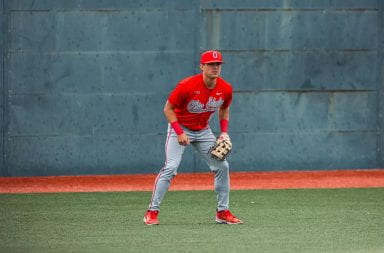Like many professional and collegiate sports organizations, the teams of the Big Ten want more control over how the media uses the material they gather at sporting events. That trend is causing some strained relations.
In September, five news organizations and the Student Press Law Center sent a letter to the Big Ten Conference outlining several objections to recently revised credential rules, which limit how press can use materials such as photos and videos. The letter argues that the rules impose serious limits on ownership and restrict members of the press from doing their jobs.
Media that refuse to abide by the current credential rules are not given press passes to cover games.
“Our members have deemed the credentials, in their current form, to be so restrictive that they will prevent media from imparting the necessary news and sports coverage their readers and viewers have come to expect,” the letter states.
“This coverage benefits the Big Ten Conference and its member institutions. While we acknowledge that both the media landscape and the manner of presenting and covering sports events change through time, there is no reason to drastically alter a relationship that has proven so mutually beneficial since 1896,” the letter continues.
Among the issues the letter calls into question are rights involving the use of video, audio and photos from games.
In August, Ohio State presented media with credential requirements that were even more restrictive than the controversial Big Ten rules. OSU’s proposed rules stated that “any account or description of the game … shall be limited to news coverage.”
These rules prohibited any media source from using any description of the game in “delayed editorial or non-editorial advertising” unless the organization got permission from OSU. Print publications routinely use photographs and content from reporters’ coverage in special editorial or advertising editions or even in editions of the publication that are printed weeks and months after the games are played.
After complaints from media executives, OSU dropped the rules. The Athletic Department now simply requires that media abide by the Big Ten rules.
Dan Wallenberg, director of athletics communications, said the department is interested only in stopping rogue photographers from taking pictures of OSU athletes and using them for profit.
“You can go online right now and see photographs of our athletes on sale,” Wallenberg said. “There are fake autographs with the photos. We want to stop that.”
He said the Athletic Department called photographers together in August to “make them read the back of their credentials form.”
Regardless of the language in the credentials form, Wallenberg said it was never the department’s intent to limit the media’s traditional use of game photos and stories in special editorial and advertising sections.
“Papers can take those photos and stories and use them a year from now if they want,” Wallenberg said.
Even though universities may be applying the rules gently, media around the country are concerned about the increasingly onerous restrictions teams and conferences are demanding in exchange for permission to cover sporting events.
For years, professional sports teams have been imposing greater restrictions on how media use the material they gather covering their teams. But critics of the trend are troubled by restrictions on how the media uses material from sporting events at public universities.
“Sporting events in taxpayer-funded stadiums at taxpayer-funded schools are fundamentally public events, and it goes against that public nature to try to restrict what can be seen by the vast majority of fans who aren’t lucky enough to have a ticket,” said Frank LoMonte, director of the Student Press Law Center, a nonprofit organization that advocates the rights of student media.
LoMonte says he also sees the credentials creating problems for college newspapers, as sports command a large readership among students.
“Journalism students are being told over and over again that they need experience and work samples in multimedia to prepare them to take on the news-gathering jobs of today,” he said. “It’s troubling that student journalists might be prohibited from developing and displaying a portfolio of their best sports journalism in the name of preserving the exclusivity of a corporate sponsor.”
Despite the restrictions, LoMonte said he has not heard complaints from media this season about teams or conferences withholding press passes or restricting the use of material gathered at games. The Lantern has not had any problems with the conference or the Athletic Department, Lantern Adviser Tom O’Hara said.
Before the start of the college football season, the Southeastern Conference presented similar limits on use of video and audio highlights on Web sites, the use of photographs and photo galleries, and various forms of social networking during the game.
The conference got a letter of complaint from many of the same news organizations that signed the letter to the Big Ten — the American Society of News Editors, Associated Press Sports Editors, Associated Press Managing Editors, Radio-Television News Directors Association and the Online News Association.
The SEC quickly eased its restrictions, but the Big Ten has yet to change its terms.


